Core Research Facilities April 2024 Newsletter

April 2024 Newsletter
Welcome to the ASU Core Facilities Newsletter. We are ready to support all your research goals. Please follow our LinkedIn page for additional resources and community information.
Ultrafast Laser Facility

For this month's newsletter, we're going to focus on the people that make our Ultrafast Laser Facility, part of our larger Biosciences Core, so great!
The Ultrafast Laser (UFL) Facility leads in time-resolved laser spectroscopy, using cutting-edge femtosecond and picosecond pulsed lasers with spectroscopes and microscopes. This enables real-time kinetic measurements across various wavelengths for dynamic process characterization. We specialize in advanced laser technologies for chemical, biological and materials science research, offering high spatial resolution and sensitivity, including at the single-molecule level, to meet modern research needs.
Meet the UFL team
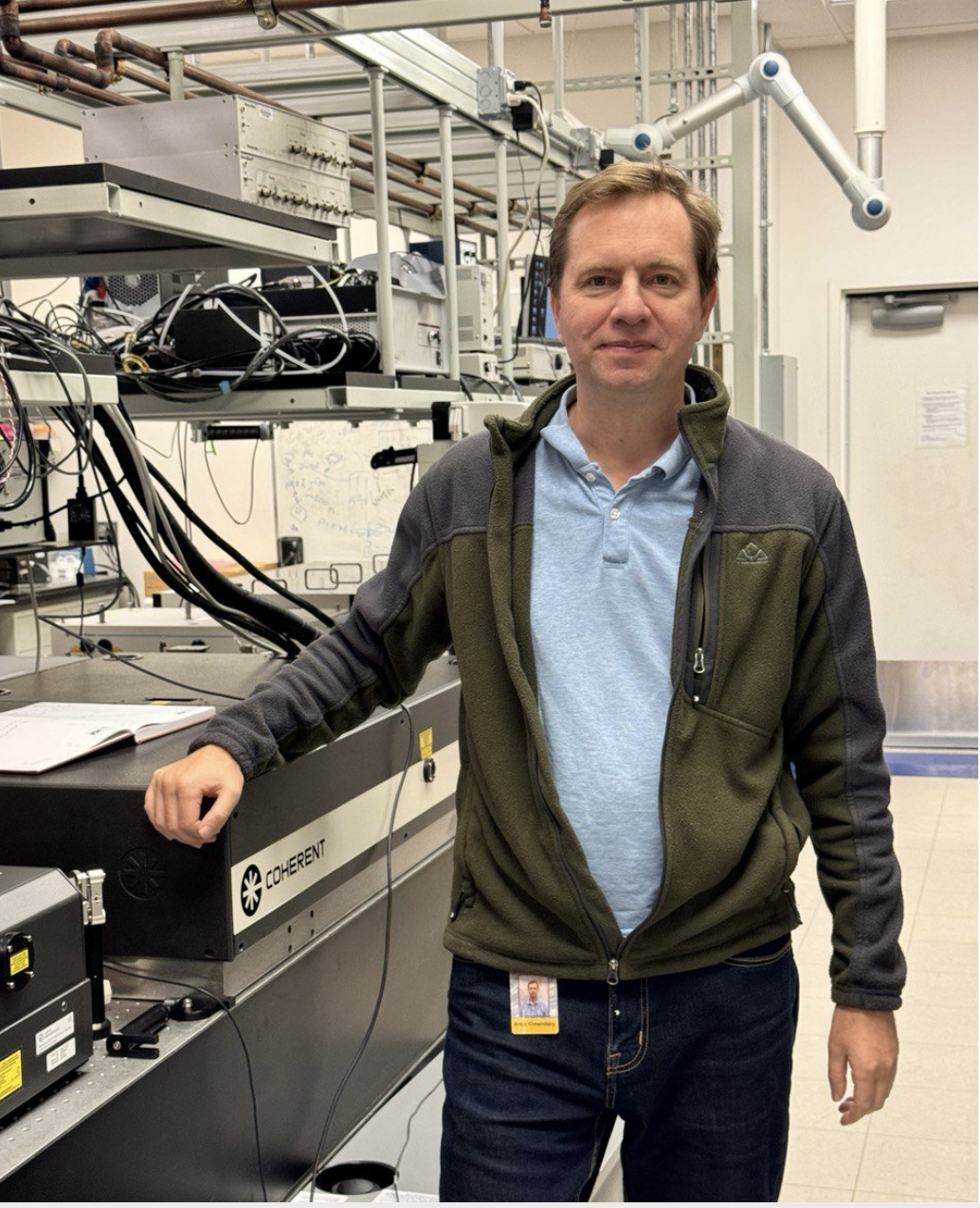
Anton Khmelnitskiy, a research professional and a manager of the UFL.
Anton's research investigates ultrafast dynamics of excitation energy transfer and charge separation in both natural and artificial systems. Anton is recognized as an expert in laser spectroscopy and experimental data analysis.

Doug Daniel is a manager in the UFL and also works in the Eyring Materials Center.
Doug's area of expertise is in Raman spectroscopy, powder x-ray diffraction, microscopy and time correlated single photon counting.
UFL's equipment
The Ultrafast Laser Facility acquired two new advanced laser setups at the end of 2023.
Astrella Lasers
Known for their reliability, user-friendly operation, and integrated design that combines the femtosecond oscillator and Ti:Sapphire amplifier together with pump lasers in a single unit. Astrella lasers are built with stability and precision in mind, offering consistent performance that is critical for research applications.
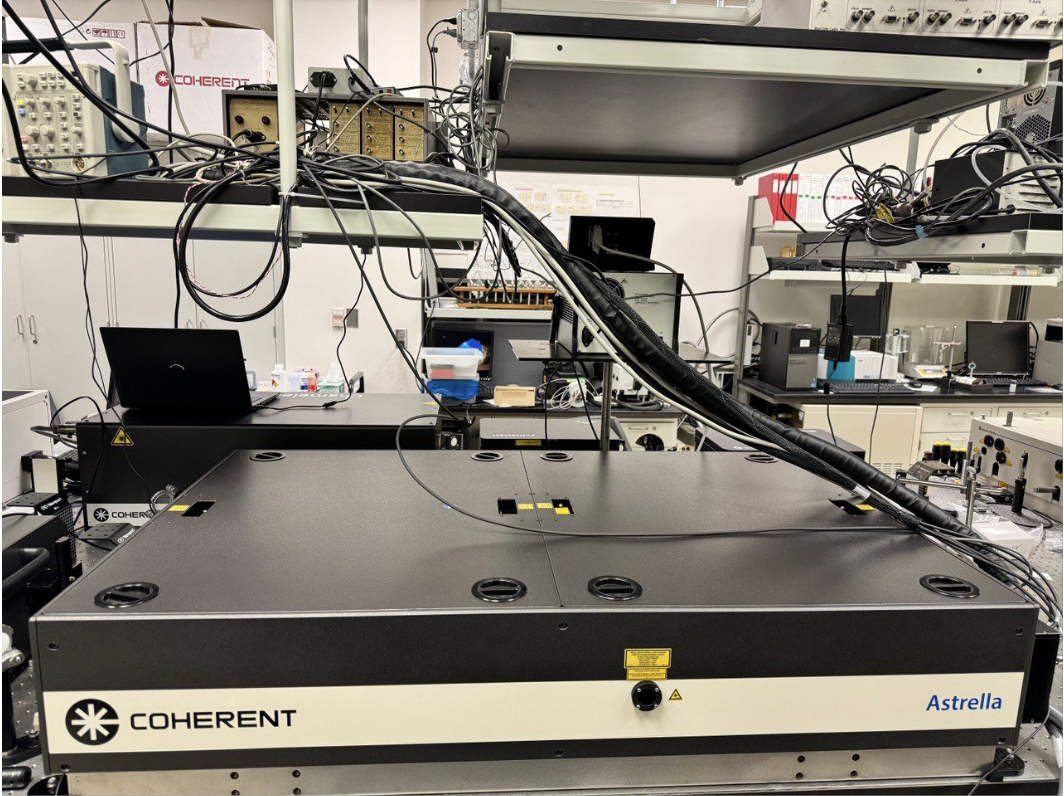
Astrella is coupled to Opera, an optical parametric amplifier from Coherent, which extends the wavelength range of these ultrafast pulses well beyond fixed 800 nm, which is required for pump-probe spectroscopy of various samples. As a result, this combination can produce femtosecond pulses at wavelengths from 240 nm (UV) up to 20,000 nm (IR) seamlessly.
Chameleon Discovery NX
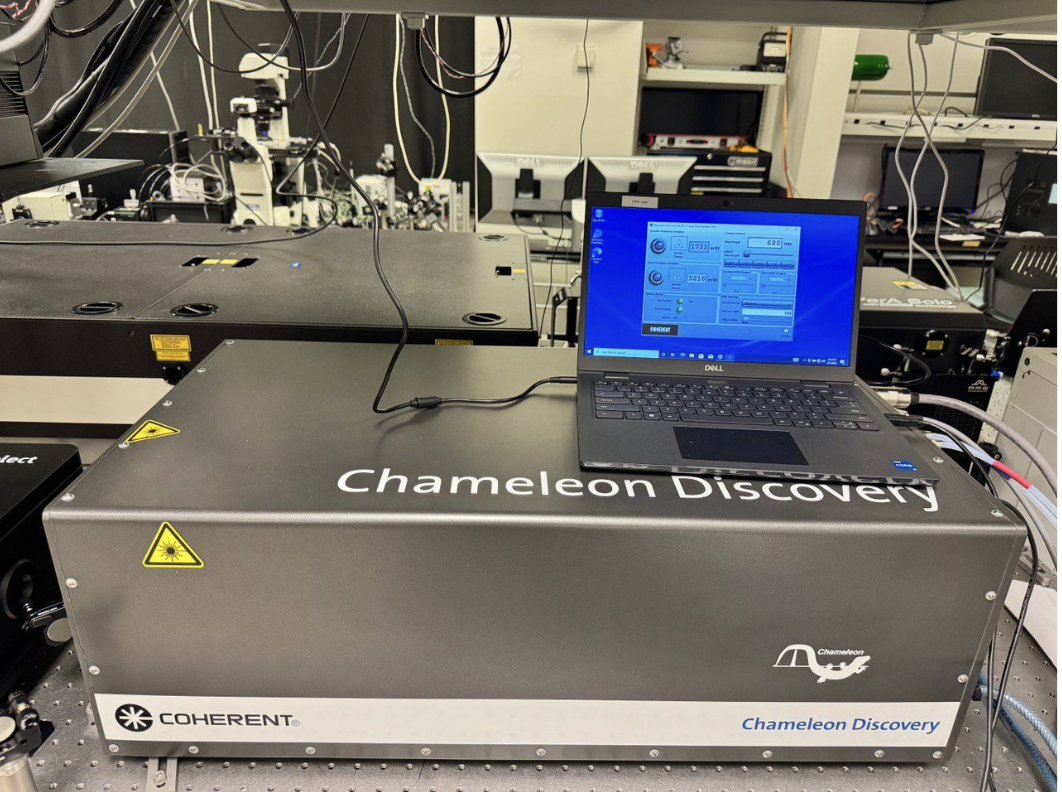
The Discovery NX is an ultrafast tunable laser with a repetition rate of 80 MHz. It delivers the highest power to address needs of users of fluorescence microscopy, time correlated single photon counting and streak camera fluorescence measurements. Additional harmonic generation setup provides gap-free, automated tuning from 330 nm to 1320 nm and the PulsSelect module allows for decreasing the repetition rate to sub KHz.
Transient Absorption Spectroscopy |
Broadband Pump-Pulse Spectrometer |
UFL Supports Research
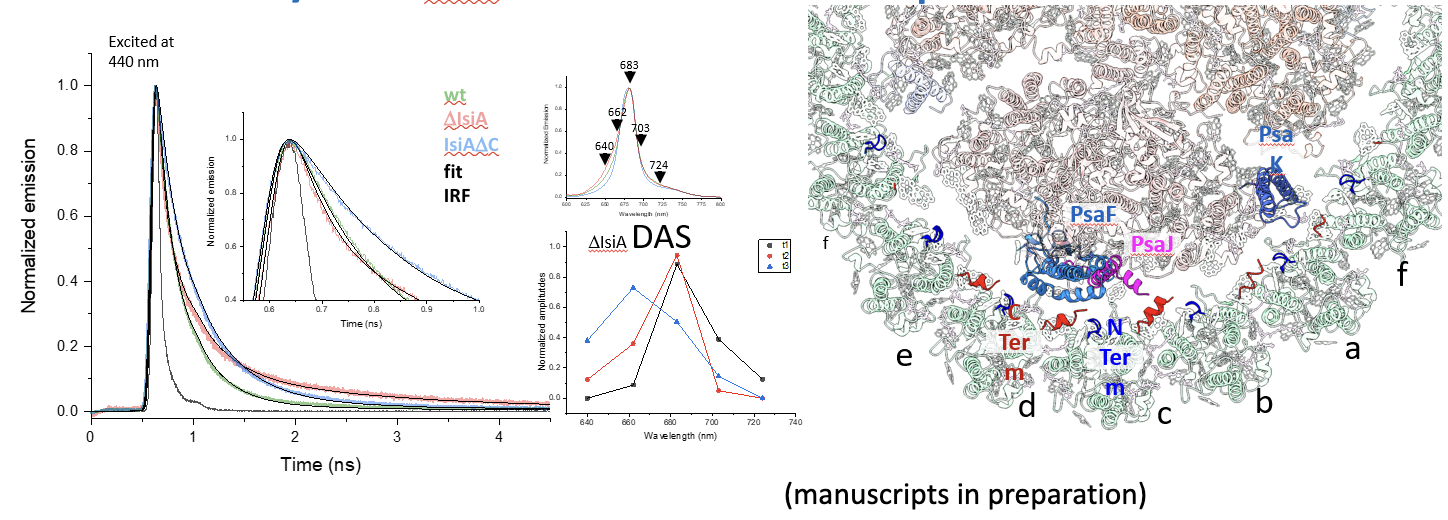
Mazor Lab
In the Mazor Lab, the team uses short-pulsed lasers to examine how the structure and function of membrane complexes are related in the process of oxygenic photosynthesis. Specifically, graduate student Jin Li from Dr. Yuval Mazor's group is conducting this research in partnership with the Ultrafast Laser Facility.
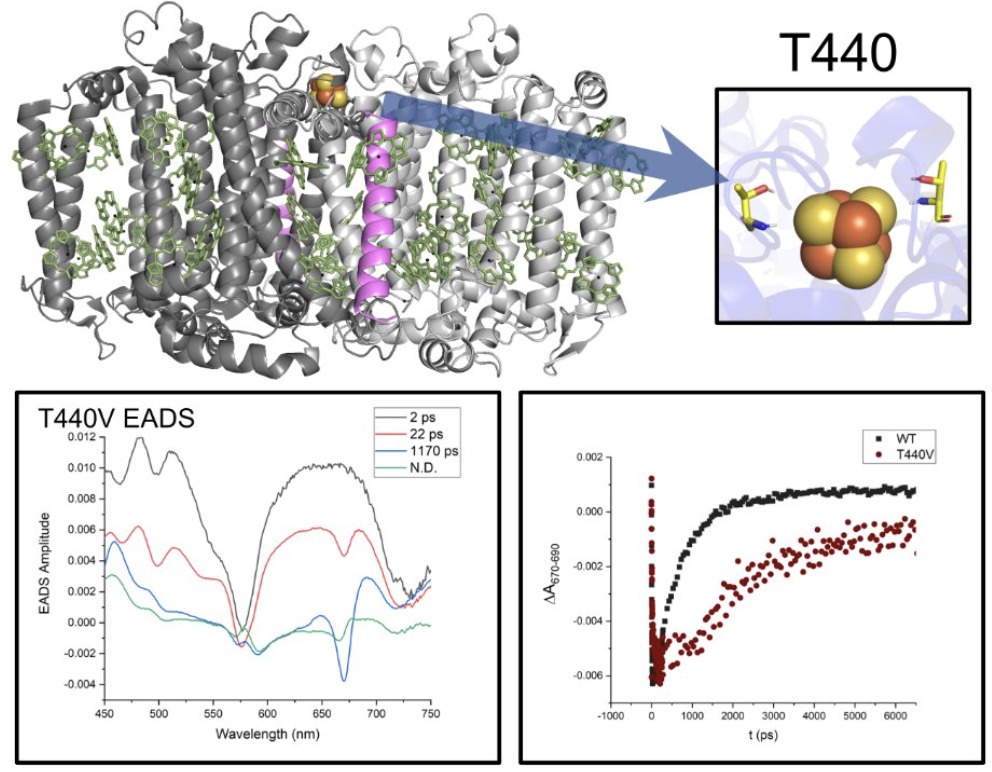
Redding Lab
In the Redding Lab, graduate student Jesse Granstrom, working under Dr. Kevin Redding, has employed the HELIOS ultrafast laser spectrometer and Astrella laser. This equipment was used to investigate the rate of electron transfer within the T440V mutant of the heliobacterial reaction center, a variant known for perturbations in its iron-sulfur (FeS) or FX cluster.
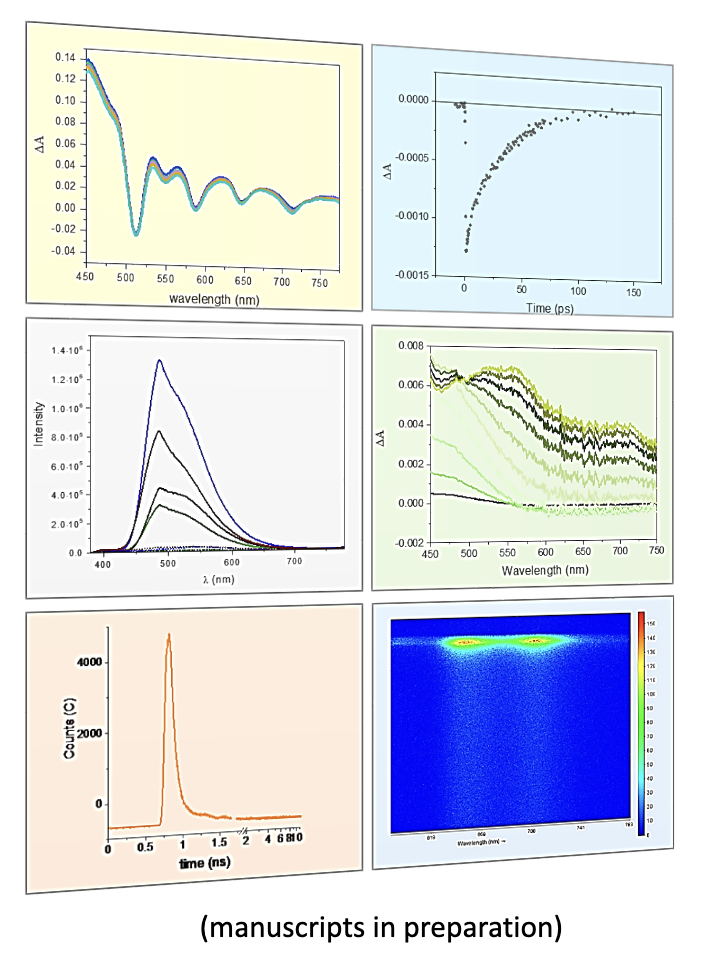
Moore Lab
The Moore Lab is leveraging transient absorption methods to investigate proton dynamics in hydrogen-bonded systems. Their work is centered on understanding how protons move in response to electron transfer.
Simultaneously, the team is examining the photonic behavior of porphyrin derivatives and the potential to boost photocatalytic reactions.
Research conducted by Emmanuel Odella, Rodrigo Dominguez and Edwin Gonzalez of the Tom and Ana Moore lab in collaboration with Ultrafast Laser Facility manager Anton Khmelnitskiy.
The impact of the Moore Lab's research.
Publications
The PshX subunit of the photochemical reaction center from Heliobacterium modesticaldum acts as a low-energy antenna
Dr. Su Lin, formerly of the Ultrafast Laser Facility at ASU Core Research Facilities, assisted with transient absorbance experiments in this research.
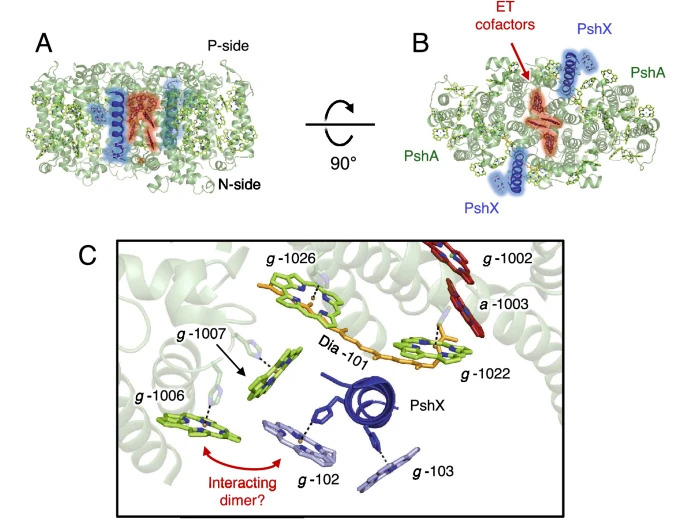
Abstract
Researchers discovered a new polypeptide, PshX, in Heliobacterium modesticaldum's photochemical center that binds bacteriochlorophyll g. Using CRISPR-Cas, they created a ∆pshX strain and found that PshX functions as a low-energy antenna subunit in energy transfer.
Method
Plasmid pPB1258 was modified to include a kanamycin resistance cassette and variants pPB1322 and pPB1384 were created using Golden Gate assembly to target pshX with CRISPR. Helper plasmids pPB191 and pGO1717 were designed to facilitate these plasmids' transfer.
Results
The pshX gene, found across various Heliobacteriaceae species, suggests an ancient, conserved role, emphasizing the need for further study on its function and distribution in heliobacterial genomes.
Delve into the researchers' findings.

